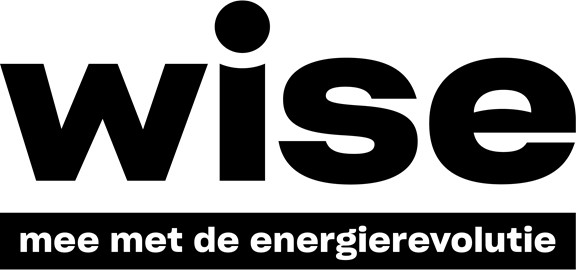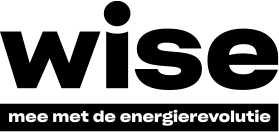Buy out the Bubble
Als je CO2-rechten koopt verklein je de uitstootruimte voor bedrijven en geef je een belangrijk politiek signaal af. Samen voeren we de politieke druk op om te zorgen dat het systeem beter gaat werken voor mens en klimaat!
Carbonkiller voert campagne om het EU emissiehandelssysteem (ETS) aan te scherpen en zo het uitstoten van CO2 duurder te maken en te ontmoedigen. Om dat te bereiken maakt Carbonkiller het voor iedereen mogelijk om CO2-rechten te kopen en te vernietigen. Die vernietigde CO2 kan dan niet meer door de industrie worden uitgestoten. Hoe meer mensen, bedrijven en organisaties CO2-rechten opkopen, hoe moeilijker het wordt voor de mega-vervuilers om nog CO2 uit te stoten.
Goed bedacht, maar slecht uitgevoerd
Om de uitstoot van broeikasgassen te beperken, verdeelt de Europese Unie vanaf 2005 zogenaamde emissierechten onder Europese bedrijven. Eén emissierecht geeft het recht om 1 ton CO2 uit te stoten. Als een bedrijf meer wil uitstoten dan het krijgt, moet het rechten bijkopen. Helaas werkt het systeem niet zoals het is bedoeld. Er zijn namelijk te veel emissierechten op de markt. Het overschot zorgt ervoor dat de financiële prikkel voor investeringen in schonere productie uitblijft. Met als gevolg dat de grootste vervuilende bedrijven blijven stoken en uitstoten. De politiek bouwt het aantal emissierechten elk jaar een beetje af. Ondanks verschillende hervormingen, gaat dit nog steeds te langzaam. En dat vinden niet alleen wij, maar ook veel klimaatwetenschappers.
Dit willen we met Carbonkiller bereiken:
- Het aantal CO2-rechten dat jaarlijks in omloop komt, moet versneld naar beneden worden gebracht;
- De prijs van CO2-rechten moet omhoog;
- We moeten stoppen met het weggeven van gratis CO2-rechten aan de industrie;
- Het ETS moet werken vanuit het ‘vervuiler betaalt’ principe.
Veelgestelde vragen
Zeker niet! CO2 compenseren door het financieren van cookstoves en zonnepanelen, mits ze in de plaats komen van fossiel geproduceerde energie en gecertificeerd zijn, is prima. Bosaanplant (boscompensatie) kan ook een manier zijn. Wees hierbij wel alert op de kwaliteit van de organisatie die compensatie aanbiedt; wordt er echt extra en duurzaam bos aangeplant met jouw geld? En wordt er voldoende rekening gehouden met de rechten van de lokale bevolking op het land dat nu voor bos aanplant gebruikt zal worden? Een goed artikel hierover schreef Friends of the Earth.
Het belangrijkste is om te beseffen dat compenseren niet betekent, dat het niet meer nodig is om de eigen CO2-uitstoot te verminderen. Om de klimaatdoelstellingen van Parijs te halen zullen we wereldwijd onze CO2-uitstoot fors moeten verminderen. Doordat bedrijven het graag hebben over compensatie, bestaat het risico dat zij zich nauwelijks meer inzetten op het daadwerkelijk verminderen van CO2. Lees daarover bijvoorbeeld dit artikel van Milieudefensie. Die afleiding kan het klimaat niet gebruiken. Met compensatie alleen redden wij het niet.
Nederland kan het emissiehandelssysteem verbeteren door:
- Kolencentrales versneld te sluiten en de bijbehorende emissierechten te vernietigen. Teken ook onze petitie om dit voor elkaar te krijgen.
- Inkomsten uit het ETS te oormerken. Meer ETS inkomsten zou dan ook meer klimaatbudget betekenen. Op dit moment is er geen koppeling tussen ETS inkomsten en Nederlandse klimaatuitgaven.
- Binnen Europa pleiten voor een snellere afbouw van gratis rechten. Wobke Hoekstra en Rob Jetten zeggen zich internationaal in te zetten voor het snel afbouwen van fossiele subsidies. Gratis ETS rechten zijn een fossiele subsidie, dus laat ze daad bij woord voegen!
Europa heeft in 2023 een herziening van het emissiehandelssysteem goedgekeurd. Deze verbeteringen zijn echter nog niet voldoende. Europa kan het nieuwe systeem verbeteren door:
- Het gratis weggeven van emissierechten nog verder en sneller in te perken. Zeker nu het voorstel ook een koolstofheffing aan de grens bevat, is het niet meer nodig om Europese bedrijven te beschermen tegen concurrentie van buiten de EU.
- Het begrip ‘klimaatactie’ beter te definiëren, bijvoorbeeld door het te koppelen aan het beginsel ‘do no significant harm’ en bestaande definities van echte groene investeringen. Zo voorkomen we dat opbrengsten van het emissiehandelssysteem verkeerd besteed worden.
- De reductie doestelling ambitieuzer te maken, en de mechanismes die daarvoor kunnen zorgen aan te scherpen (zoals de MSR en de benchmarks voor gratis rechten).
De Europese Commissie heeft in 2019 een Market Stability Reserve (MSR) ingevoerd om het overschot aan CO2 rechten uit de markt te halen en uiteindelijk te vernietigen, als de reserve ‘te groot’ wordt. De MSR trad Januari 2019 in werking en is verder aangescherpt in de laatste hierziening van het emissie handelssysteem in 2022.
De vraag rijst of het kopen van emissie rechten nog nodig is, als er nu een systeem is dat bedoeld is om die rechten uit de markt te halen.
Met de invoering van het MSR zien we dat er een realistische prijs voor CO2 ontstaat op de markt. Een prijs die bedrijven eindelijk echt aan kan zetten tot schoner produceren. Doordat het MSR steeds beter gaat werken, wordt het weghalen van rechten uit de markt juist effectiever; het opkopen van CO2 rechten kan nu direct zorgen voor een hogere CO2 prijs .
Helaas lost het MSR niet alles op. Wanneer de schaarste te groot wordt, kunnen (een deel van) de weggehaalde CO2-rechten vanuit dit fonds weer op de markt worden toegelaten. Bovendien zullen er weer miljarden rechten beschikbaar komen op de markt, als Europese landen hun kolencentrales gaan sluiten om aan de klimaatdoelstellingen te voldoen, maar de uitstootrechten niet vernietigen.
Zolang het MSR niet in staat is de nieuwe overschotten weg te werken, gaat Carbonkiller door. Het opkopen en vernietigen van emissierechten door individuen, bedrijven en instellingen zien wij als een goed campagnemiddel. Meer maatschappelijke druk blijft noodzakelijk om ervoor te zorgen dat het emissiehandelssysteem beter gaat werken en wij de klimaatdoelstellingen van Parijs gaan halen.
Absoluut! Als je CO2-rechten koopt verklein je de uitstootruimte voor bedrijven en geef je een belangrijk politiek signaal af. Je laat dan zien dat burgers het belangrijk vinden dat het systeem gaat werken, en dat bedrijven minder CO2 moeten uitstoten.
Het is juist belangrijk dat veel mensen, bedrijven en instellingen zich met het systeem gaan bemoeien. Klimaatverandering raakt iedereen in de samenleving, dus daarom moeten jij en ik ook onderdeel zijn van de discussie rondom emissiehandel. Politici moeten weten dat ze niet achterover kunnen leunen, maar dat ze hard aan het werk moeten om ervoor te zorgen dat het emissiehandelssysteem heel snel veel beter gaat werken. Dat is de grootste impact van jouw CO2-rechten aankoop.
Het opkopen van CO2 rechten is geen directe vorm van CO2 compensatie. Het geeft je wel de kans om een reële prijs te betalen voor je eigen uitstoot van CO2 en een politiek signaal af te geven.
De impact van het permanent vernietigen van emissierechten hangt af van het aantal mensen dat CO2-rechten koopt en politieke aanpassingen aan de emissiehandel. Het zou fantastisch zijn als Europeanen ineens massaal rechten gaan opkopen en vernietigen om zo een signaal af te geven en het grote overschot aan emissierechten weg te werken. Vandaar onze slogan “Buy out the Bubble!”.
De dynamiek van de wereldwijde handel en de emissiehandel is helaas te complex om te kunnen zeggen dat je CO2 compenseert wanneer je CO2 rechten koopt. Maar wanneer we door het kopen van emissierechten en een campagne voor een verbeterd systeem, zorgen voor schaarste aan CO2-rechten, dan maakt elk recht dat je koopt het lastiger voor Europese bedrijven om nog CO2 uit te stoten. Het recht dat jij hebt gekocht, kan namelijk niet meer door een vervuilend bedrijf gekocht worden. Daardoor wordt het voor hen duurder om CO2 uit te stoten waardoor zij een financiële prikkel hebben om minder CO2 uit te stoten.
Bovendien moet de overheid de inkomsten van de verkoop van CO2 rechten besteden aan klimaatactie (dit gaat binnenkort van 50 naar 100% van de inkomsten). De prijs die jij voor je CO2 recht betaalt, moet dus besteed worden aan verduurzaming!
In plaats van compenseren is het natuurlijk nog beter om als individu uitstoot te vermijden, maar dat kan niet helemaal. Als je autorijdt, vliegt of vlees of kaas eet, stoot je CO2 uit. Met onze tool reken je uit hoeveel CO2 gekoppeld is aan jouw gedrag. Via onze website kan je die tonnen CO2 vervolgens uit de markt halen en vernietigen.
Carbonkiller is een initiatief van WISE (World Information Service on Energy), een milieuorganisatie die gespecialiseerd is in energievraagstukken. WISE voert al sinds 1978 campagne tegen kernenergie en vóór groene stroom. Meer informatie over WISE is te vinden op www.wisenederland.nl.
WISE staat bij de belastingdienst geregistreerd als een Algemeen Nut Beogende Instelling (ANBI). Dat betekent dat WISE zich als organisatie inzet voor het algemeen belang en dat wij geen winstoogmerk hebben. Elke ANBI-organisatie moet aan een aantal voorwaarden voldoen zoals openbaarheid van specifieke informatie. Zo weet je dat je geld via Carbonkiller of je donatie aan WISE goed terecht komt.
Met Carbonkiller willen wij vooral druk opbouwen om het emissiehandelssysteem (EU ETS) strenger te maken. Voor en achter de schermen zetten we ons in voor ambitieuzer beleid, dat beter werkt voor mens en klimaat. Daarnaast zou het fantastisch zijn als Europeanen massaal rechten gaan opkopen en vernietigen, om zo het grote overschot aan emissierechten weg te werken. Vandaar onze slogan “Buy out the Bubble!”
Het Emissie Handelssysteem is een Europese markt waarin een aantal CO2 intensieve sectoren uitstootrechten moeten kopen voor hun productieprocessen. Hoe hoger de prijs, hoe interessanter het wordt om te verduurzamen. Maar er zijn veel teveel rechten in omloop om klimaatverandering echt tegen te gaan. Daarom biedt Carbonkiller als enige in Nederland de mogelijkheid aan particulieren en mkb om rechten te kopen en te vernietigen.
Als jij CO2-rechten koopt, verklein je de uitstootruimte voor grote vervuilende bedrijven. Bovendien zullen Europese overheden de inkomsten uit de verkoop van rechten moeten besteden aan maatregelen om klimaatverandering tegen te gaan.
Dit willen we bereiken:
Door via Carbonkiller uitstootrechten te kunnen we een belangrijk politiek signaal afgeven: het uitstoten van CO2 moet een eerlijk prijs krijgen. Zo kunnen we de druk opvoeren om het emissie handelssysteem te verbeteren.


